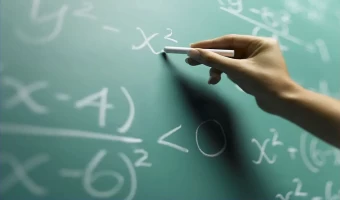A fraction is the simplest approach to showing one quantity with respect to the complete parts of the object, place, and quantity. The number showing the available parts is written above the bar and the number showing the whole quantity is written below the bar while the bar represents the fractional relationship.
Here is the general form of a fraction:
=2/3
In this fraction, the above number is showing the parts we have and it is called a numerator. The number written below the fractional bar shows the entire part and is called the denominator. In Mathematics, finding the reciprocal of a fraction is important to solve different problems.
Don’t you know how to do so? You should read this blog as we will guide you about the solution to such problems. Let’s get started!
What is the reciprocal of a fraction?
In English, reciprocal is a synonym of the opposite which means reversing some actions. Reciprocal of a fraction is also similar to the same meanings but from a little different perspective. In Mathematics, the fraction reciprocal is the inverted form of any fraction.
In simple words, if the elements of a fraction are reversed or their position is changed, the new fraction will be the reciprocal of the original one. For example, if the original fraction is 2/3, its reciprocal will be 3/2.
As it can be seen that you only have to replace the positions of the numerator and denominator to find its reciprocal. But it can be hard to find a reciprocal if you have to add two fractions first. Most students use a reciprocal fraction calculator to solve such problems quickly.
But you still need to know how to find this term when fractions are connected with different mathematical operations.
How to Find the Reciprocal of a Fraction?
Undoubtedly, finding the reciprocal of a fraction is simple as you have to replace the position of the terms only. But it can be difficult when you have to solve the fractions first. To guide you in such questions, we have discussed them comprehensively here.
When Fractions are Added / Subtracted?
Sometimes, you might be asked to find the reciprocal of a fraction after adding or subtracting them. The procedure to do so is simple for both mathematical operations. You only have to follow these steps to find the addition of the fractions and then find their reciprocal.
- Find the LCM of the denominators of the given fractions
- Divide LCM by every denominator and multiply the answer of the numerator of the same fraction
- Add or subtract the numbers that come out to be above the fractional bar
- Now, you have added or subtracted the two fractions to find an equivalent fraction
- You only have to interchange the position of numerator and denominator to find it's reciprocal
When Fractions are Multiplied?
When two or more fractions are given in multiplication and you are asked to find their reciprocal, you need to find the resultant fraction first. Here are the steps that you have to take in this regard.
- Divide the numerator and denominator by the same number to simply the fraction Repeat step 1 for all fractions
- Once you have converted them to a simplified form, multiply numerator with other numerators and denominator with other denominators
- It will give you resultant of the fractions after multiplication
- Now, you can find the reciprocal just by interchanging their positions
Conclusion
In the above blog, we have shared a comprehensive guide about finding the reciprocal of a fraction. For your ease, we have splitted the procedure according to the mathematical operations involved in the fractions.
Now, you can either solve the problem manually or use an online math calculator to perform this calculation. Using such a tool can help you in finding the reciprocal of as many fractions as you want within a few seconds.
